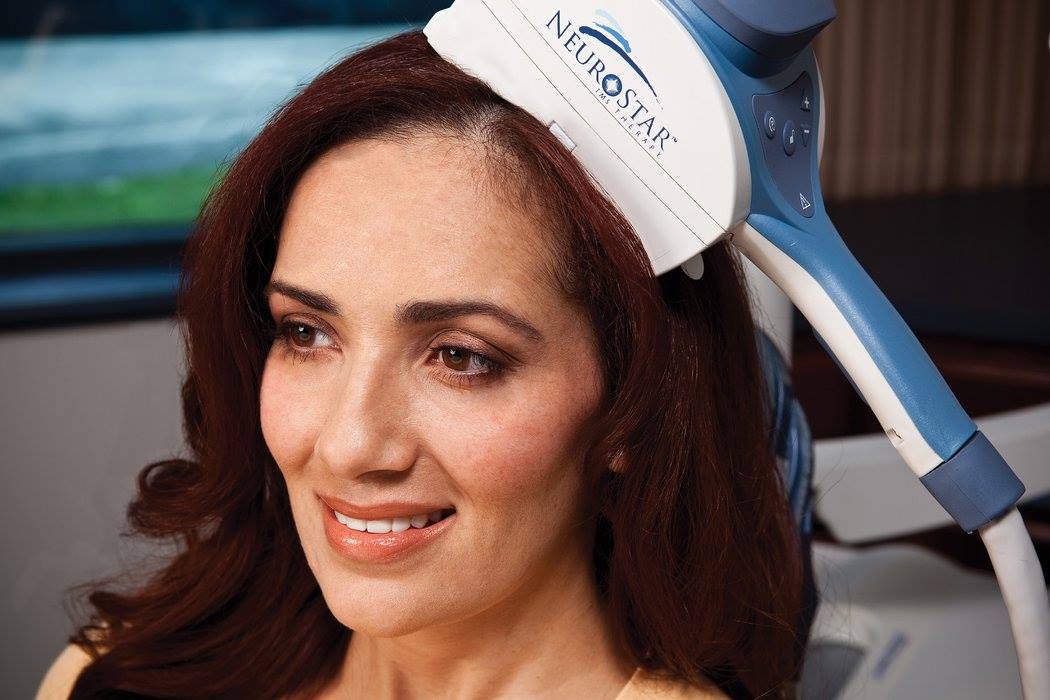Transcranial Magnetic Stimulation (TMS) is a treatment for Major Depressive Disorder (commonly known as depression) that is gaining recognition for its success rate. We provide free consultations to see if TMS is right for you. In our office, we have had over 200 patients go through the TMS treatment since 2013. Of those who did it, 66% achieved full remission from depression and 90% had a positive response to the TMS treatment. Here are 6 facts on how TMS can treat your depression.
Most Insurances Cover TMS for Treatment of Depression Insurance companies are covering TMS as a treatment of depression after it became approved by the FDA in 2008. Contact us
TMS Uses Magnetic Fields to Stimulate Neurons Depression (major depressive disorder) is a common and serious medical illness that negatively affects how you feel, the way you think, and how you act.[1]
faulty mood regulation
genetic predisposition
stressful or traumatic events
substance abuse
There are methods to address these causes such as substance abuse counseling, genetic testing, and psychological counseling/ therapy. Antidepressants are used to improve mood regulation, but antidepressant effectiveness is quite low.[2]
Comparison of brain activity with depression and without depression. Popular convention would have you believe that emotions come from the heart, but emotion and mood regulation takes place in the brain. Researchers believe that — more important than levels of specific brain chemicals — nerve cell connections, nerve cell growth, and the functioning of nerve circuits have a major impact on depression.[3]
Neuronal Pathway for Neurotransmitter from the left prefrontal cortex A simple way to think of it is to think about the neuronal pathway as a highway and neurotransmitters as cars on the highway. When the highway is full of potholes and damaged, cars may get into collisions and traffic on the road slows down and becomes disrupted. We can clear the collision and let traffic resume, but sooner or later more accidents will occur. We have to address the issue at hand and repair the road.
With TMS, a magnetic field is used to repair the neuronal pathway (the road) and stimulate the neurotransmitters (the cars) so the brain’s mood function can perform correctly.
TMS is Non-invasive & Does Not Require Sedation The TMS procedure does not require any machinery to place in the body, surgically or otherwise. The magnetic coil is put on the left prefrontal cortex where it is barely touching the patient’s head and tightened in place so there is no weight that the head bares. The magnetic coil works by inducing a magnetic field.
The magnetic coil is non invasive. During the procedure the only sensation the patient will feel is a tapping on the head, so there is no need for the patient to be sedated or be administered anesthesia.
Does Not Require Medication The TMS treatment only involves the sessions at the office. There is no need for additional medication to be supplied. During the treatment, patients begin to notice that they can stop taking antidepressants . In some cases we have had in our office, some patients who were on more than 10 different medications significantly reduced the number of medications they needed, and in some cases they stopped taking medications all together.
Little to No Side Effects The side effects[4]
discomfort or pain on the scalp
Headache
Tingling of facial muscles
Lightheadednesses
There is small risk of these side effects. If there are any of these side effects, they improve after each session. Some serious side effects that are extremely rare are:
We have had no case of any seizure in our office.
TMS Treatments Take 37 Minutes Each TMS treatments take 37 minutes each a day, five days a week, for 5 to 6 weeks for a total of 30 treatments . During the treatment you are awake, and our office has TV provided to watch Netflix, Youtube, or Hulu . If TV is not your style, you can listen to music or read a book . If anything else, the TMS treatments could be a great time to practice meditation .
If you still have more questions or would like to schedule a free consultation, contact us
Works Cited
Ranna Parekh, M. M. (2017, January). What is Depression? Retrieved from psychiatry.org: https://www.psychiatry.org/patients-families/depression/what-is-depression
Ph.D., E. S. (2014, August 7). Are Antidepressants Effective? Retrieved from psychologytoday.com: https://www.psychologytoday.com/blog/how-everyone-became-depressed/201408/are-antidepressants-effective
What causes depression? (2017, April 11). Retrieved from Health.harvard.edu: http://www.health.harvard.edu/mind-and-mood/what-causes-depression
Staff, M. C. (2015, December 03). mayoclinic.com. Retrieved from Transcranial Magnetic Stimulation: http://www.mayoclinic.org/tests-procedures/transcranial-magnetic-stimulation/details/risks/cmc-20163840



